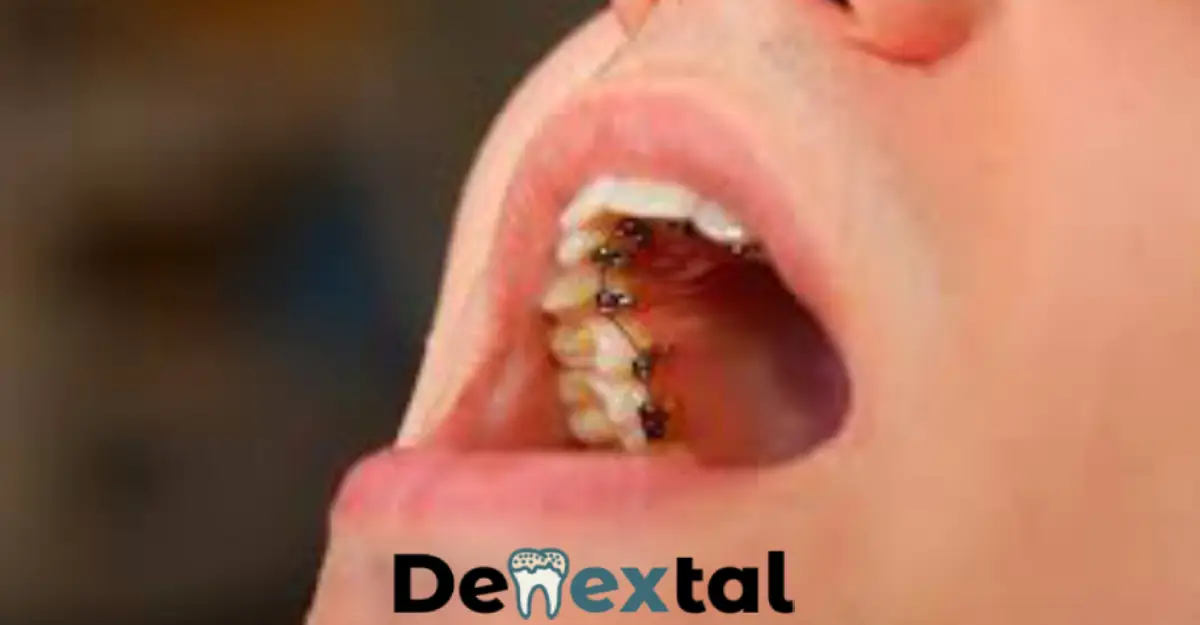Lingual braces, orthodontic treatment can be a big commitment, but it can also greatly improve the appearance and health of your smile. If you’re looking for a discreet orthodontic solution that can straighten your teeth without drawing attention, lingual braces may be the perfect choice for you. Lingual braces are orthodontic appliances that are placed on the inside of your teeth, making them virtually invisible to the outside world. In this article, we’ll take a closer look at lingual, including the benefits and drawbacks, how they work, and what to expect during treatment.
What are lingual braces?
Lingual braces are orthodontic appliances that are placed on the inside of your teeth, rather than on the front. This makes them a popular choice for adult patients who want to straighten their teeth without drawing attention to their treatment. Lingual work in much the same way as traditional braces, using brackets and wires to apply gentle, constant pressure to the teeth. The only difference is that the brackets and wires are on the inside of the teeth, where they are virtually invisible.
Benefits of lingual braces
One of the biggest benefits of lingual braces is their discretion. Because they are placed on the inside of the teeth, they are nearly invisible to anyone looking at the front of your teeth. This makes them a popular choice for adult patients who want to straighten their teeth without drawing attention to their treatment. Additionally, lingual braces can be used to correct a wide range of orthodontic issues, including crowding, spacing, overbite, underbite, and crossbite.

Another benefit of linguals braces is their customization. Because lingual are custom-made to fit your teeth, they are comfortable and effective. Your orthodontist will work with you to design a treatment plan that takes into account your specific orthodontic needs, ensuring that you get the best possible results.
Potential drawbacks of lingual braces
While lingual braces offer many benefits, there are also some potential drawbacks to consider. One of the biggest drawbacks is that they can be more difficult to clean than traditional braces. This is because they are located on the inside of the teeth, making it harder to reach all areas. Additionally, because they are so close to the tongue, some patients may experience discomfort or difficulty speaking initially.
Another potential drawback is that lingual are typically more expensive than traditional braces. This is because they are custom-made and require specialized training to place and adjust. Additionally, the treatment process with lingual may take longer than with traditional braces, as the brackets and wires are placed in a more complex location.
How do lingual braces work?
Lingual work in much the same way as traditional braces. The brackets and wires are placed on the inside of the teeth, where they apply gentle, constant pressure to the teeth. Over time, this pressure gradually moves the teeth into the desired position. You will need to visit your orthodontist regularly for adjustments to ensure that your treatment is progressing as planned.
What to expect during treatment with lingual braces
The treatment process with lingual braces is similar to the process with traditional braces. Your orthodontist will take impressions of your teeth, which will be used to create custom brackets and wires for your lingual. Once your lingual are in place, you will need to make some adjustments to your lifestyle to ensure that your treatment is successful. This may include avoiding hard or sticky foods and brushing and floss regularly to maintain good oral hygiene.
You will also need to visit your orthodontist regularly for adjustments. During these visits, your orthodontist will check the progress of your treatment and make any necessary adjustments to the brackets and wires. The frequency of these visits will vary depending on your individual treatment plan and the stage of your treatment.
In addition to regular visits with your orthodontist, you will also need to take good care of your lingual. This may include brushing and flossing regularly, using orthodontic wax to relieve any discomfort, and wearing a retainer after your treatment is complete to maintain your results.
Frequently Asked Questions
Conclusion
Lingual braces are an ideal solution for patients who want to straighten their teeth without drawing attention to their treatment. With their discreet design and ability to correct a wide range of orthodontic issues, lingual can help you achieve a beautiful, healthy smile. If you’re considering orthodontic treatment, talk to your orthodontist about whether lingual are right for you. To find a qualified orthodontist near you, visit the American Association of Orthodontists website (https://www.aaoinfo.org/).
How long does a root canal take? We have come to the end of our article. You can check out our related article from the link below.
Incognito Braces – A Comprehensive Guide to the Invisible Orthodontic Solution

